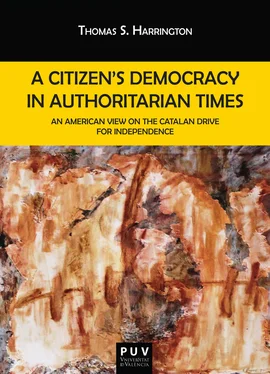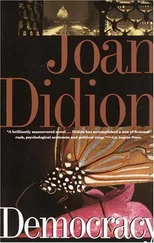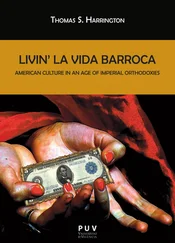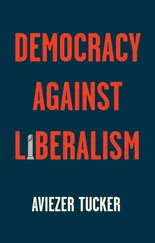1 ...6 7 8 10 11 12 ...15 While such a vision holds some truth, it pays short shrift to the important role played by home-based, religiously-informed nationalist organizations in this renaissance. This was especially the case in Catalonia the place which, in one form or another, has always served as vanguard of nationalist mobilization of the Iberian periphery. While figures like Tarradellas ambled through a solitary and often humiliatingly inconsequential exiles, Jordi Pujol and other Catholics nationalists like him were busy reconstructing the bases of the Catalan identity through their participation and leadership in groups such as the brotherhood of La Mare de Déu de Montserrat, Crist Catalunya, and the Grup Torras i Bages. In these organizations, the example of Prat de la Riba was valued much more highly valued than that of Companys or even Macià and Marxist forms of analysis were generally shunned. In Galicia, the process of nationalist regeneration followed a similar route with the catholically-inflected Galaxia Group, led by Ramón Piñeiro, García Sabell and Carballo Calero, gradually reviving the goals and works of the largely conservative Xeneración Nós of Risco. In the Basque Country, the model of analysis outlined above conforms somewhat better to reality. There, the PNV of the post-war was hobbled, just as it had been at the turn-of-the-century, by an inability to generate and place into wide circulation among the intellectual class (never mind the general public) a compelling repertoire of unquestionably “native” cultural materials. This culture-planning failure, was one of the prime reasons why a younger generation of impatient activists felt the need to break from the PNV and found ETA in 1959, filling this “cultural gap,” as it were, with armed violence heavily informed by Marxism and anti-colonial theory. However, when we look a little closer, we can see that for all its apparent interest in non-confessional and ostensibly left-leaning ideologies, ETA and its present political arm HB have discourses that are heavily indebted to highly mystical notions of communal identity. In many ways, the constructs of abertzale sacrifice and martyrdom are as close as one gets in the so-called western world to the militant religious fervor found in some branches of Islam.
The seemingly natural symbiosis between historistic and religiously imbued politics and nationalism has been made readily manifest in the years since the ratification of the 1978 Constitution. In the months previous to the inaugural autonomous elections in Catalonia (March 1980), it was widely believed that one of the major leftist groups PSC-PSOE or the PSUC would gain a leading plurality of the votes. To the surprise of many, it was Pujol’s coalition (CiU) with its strong, and largely complex-free, relationship to the culture-planning repertoire engendered by Prat de la Riba, d’Ors, Cambó and others at the outset of the 20th century that carried the day. The Catalanist left is still waiting for its first autonomist victory. A similar process can be seen in the Basque Country. In the 1980 autonomous elections there, the PNV, linked like Pujol’s coalition to confessional social thought and early 20th-century culture-planning repertoires, quickly reasserted its hegemony (unbroken right up until today) within both the nationalist camp and the country as a whole. The story was has been pretty much the same in Galicia except for the fact the long dominant right-wing party is a “sucursal” of the state-wide PP. But even this is very much in keeping with the early twentieth history of Galeguismo, within which claims for self-rule were always much less strident than in Catalonia or the Basque Country owing to a) the relative weakness of the urban bourgeoisie and b) the continuing grip of a Madrid-oriented caciquista regime over public life in many rural areas.
Owing to both its own experience as a persecuted party under Franco as well as its acute awareness of the need to engender a workable civic consensus after years of one—party rule, the PSOE adopted largely “hands-off” policy toward both Castilianist culture planning and the movements of national identity in Catalonia, Galicia and the Basque Country during its long stay in office. In its reluctance to use centralist power for blatantly centralist ends it can be compared to the Republican government of the period 1932-34. It was, however, also like that government in terms of its general refusal to work pro-actively towards the development of more fully articulated and truly multi-polar model of intra-state cultural relations.
During its first term in office, a time when its working majority depended on support from Pujol’s CiU, the Aznar government more or less continued with the line established by the Socialists. But even while maintaining this ostensibly non-committal posture in the realm of day-to-day tactics, it was deeply engaged in a culture-planning effort aimed at re-igniting the dormant flames of Castilianism. One key element of this campaign was the rehabilitation of the historical legacy of Cánovas del Castillo and the politics of the Restoration. This was accomplished through a barrage of government-backed commemorations, studies and reissues of his work. In this way, the PP prepared the ground not only for a re-legitimation his peculiar brand of governance by an elitist minority, but the return of his pseudo-dialogic approach to the problem of dealing with progressivism and Castile’s peninsular others.
Another was the creation of the La Fundación San Millán de la Cogolla, dedicated to “investigar, documentar y difundir los orígenes de la Lengua Castellana y la utilización de las nuevas tecnologías para la difusión y actualización del castellano en el mundo.” (“Origen y constitución” s.n.) San Millan located in Old Castile is, of course, the site of the Monasteries of Suso and Yuso which, according to the late-19th and 20th century philological school, was the “cuna de la lengua española” owing to its link with Glosas emilianenses and later on, the poetry of Berceo. The monasteries possess the added symbolic advantages of having been definitively put out of business by the desamortización of Mendizábal in 1835. Thus, in creating the foundation in 1998, the Aznar government was not only creating an institutional bulwark for Castilianism, destined in time to become the “atalaya de nuestra cultura” (“Origen y constitución” s.n.), but also righting what in traditionalist eyes one of lay progressivism’s most egregious assaults on the church’s rightful place in Spanish society. In the ensuing years it has become a launching ground for all types of centralist culture-planning initiatives. When in July of 2000, the government finally released its long awaited white paper on the teaching of humanities, with its call for a “vertebration” of the national educational system, it did so at the newly renovated monasteries. It has also played host to events such as the Encuentro de Embajadores Iberoamericanos, Reunión de las Academias de la Lengua Española, an Exposición Pictórica en Homenaje a la Lengua Española y a San Millán de la Cogolla, Presentación oficial de la nueva edición de la Ortografía de la Lengua Española. At this last event, the then Minister of Culture Mariano Rajoy said:
España no es una potencia económica ni industrial, pero sí una colosal potencia cultural gracias al castellano, que hablan en el mundo unos 400 millones de personas… España es inexplicable sin su proyección hacia América y a esa cultura común hispánica debemos hoy nuestro lugar en el mundo. (Presentación oficial”s.n. )
Could the drive to re-bundle the fundamental building blocks of the centuries-old tradition of Castilanism (language, faith, tradition, and a “universal” imperial mission) be any clearer?
In El bucle melancólico the Basque writer and former member of ETA, Jon Juaristi suggests that the self-pitying hermeticism of the contemporary Basque discourse of identity has virtually guaranteed the failure substantial and constructive dialogue between its adherents its and those of the peninsula’s other nationalist projects. Similarly in Catalonia, intellectuals such as Alejo Vidal-Quadras from the centralist right and Josep Ramoneda from the Catalanist left have long railed against what they see as conservative Catalanism’s inherent inability to engender a meaningful ecumenical dialogue leading to a the construction of a truly plural Spain. In Galicia, figures such as Alfredo Conde and Marcial Gondar Portasany have criticized Galeguismo’s tendency to greatly overplay its hand on the issue of linguistic uniformity. Implied in all of these criticism’s is a belief that the discursive structure of historicist nationalisms—which as we have seen have been the dominant strain of nationalist thought the Iberian periphery during the contemporary era—carry within them a need for exclusivity, and from there, a tendency toward institutional coercion, that is fundamentally antithetical to the construction of a functioning multi-national polity. These criticisms, especially those of Juaristi and his countryman Mikel Azurmendi, have been enthusiastically received and re-circulated by the current conservative government in Madrid. Yet, while they celebrate these “deconstructions” of the peripheral culture-planning projects, they do nothing to encourage a similar analysis of Castilianism’s ample tradition of historicistically-justified exclusivity.
Читать дальше












